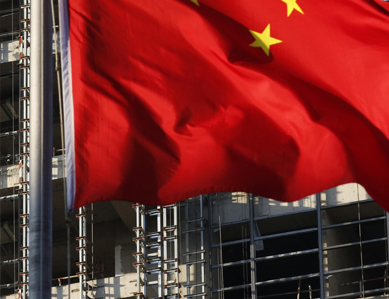Over the last several years, Chinese investment has assumed an increasingly influential role in U.S. commercial real estate.
In 2016 alone, Chinese investors spent $15.1 billion on commercial property here, representing 46 percent of Chinese investment in other countries, Real Capital Analytics reports. The United States was the number one destination for China’s outbound investment. Some of those deals were gigantic – five of them were each worth more than $1 billion. Portfolios of hotel and office properties accounted for many of those transactions.
But it’s grown to the point that Chinese officials are taking action to throttle Chinese firms’ overseas investment. As of mid-August, that country’s State Council released a new set of guidelines that will restrict (though not completely eliminate) Chinese investors’ ability to put money into real estate, hotels, sports, theaters and entertainment. And anything related to the gambling or sex industries will now be completely off limits.
Encouraging Investment in Infrastructure
David Dollar, a senior fellow at the Brookings Institution, noted in a blog post that China’s effort to control precisely what investors are buying is a new development.
“The No. 1 destination of Chinese capital has been the U.S. That is not likely to change,” Dollar wrote. “But some of the purchases have been hotels, real estate and movie theaters. The announcement indicates that these will now be disfavored.”
Instead, Chinese companies are being encouraged to put their money in roads, rail, ports and other related infrastructure – part of the country’s “Belt and Road” initiative to increase trade between China and other countries in Asia, Eastern Europe and Australia. Investments in tech, oil, mining, fishing and farming will be allowed, too.
Chinese leaders are reining in investors because they’re concerned these companies may be taking on an unsustainable, “irrational” amount of debt through these acquisitions. Officials also want to reduce capital flight from China and shore up its currency.
A Change in Approach
CBRE Research believes the new rules may lead Chinese investors to adjust their strategies, but fundamentally, they’ll continue to find ways to invest in international markets.
For example, real estate firm Cushman & Wakefield predicts more Chinese companies will put money into logistics firms whose holdings include warehouses and related real estate. And the firm believes Chinese developers will probably continue to pursue residential developments in other countries, The Australian Financial Review reported. Chinese investors could also use offshore entities to make deals, CBRE Research noted in a report released after the controls were announced.
“Large investors already have money in circulation via the balance sheets of insurance companies and other investment management platforms they have acquired,” the report stated. “They are likely to use these offshore platforms to engage in property acquisitions.”
Investors could also work through entities they own in Hong Kong or participate in joint partnerships.
“Our data shows that China remained the largest source of cross-border commercial real estate investment capital (both new and capital already circulating offshore) from Asia in H1 2017,” said Robert Fong, director of research for CBRE Asia Pacific. “New regulations should help to ensure that future outbound investment is more financially sound and strategically focused, but the impact of Chinese capital on key global real estate markets should continue for some time.”
Take the first half of 2017 as an example; government officials have been tightening down on outgoing investments since the end of 2016, but even so, Chinese investors still put $25.6 billion into U.S. real estate for the first half of the year, up from $10.1 billion during the same timeframe a year earlier, CBRE Research reported. Even so, Morgan Stanley forecasts that Chinese investment in international real estate could drop by 84 percent this year.)
Why U.S. Commercial Still Attracts Investment
“Multiple years of steady job growth and the strengthening U.S. economy – albeit at a modest pace – makes commercial property a safe bet for global investors looking to diversify their portfolios and generate returns outside their country of origin,” said Lawrence Yun, chief economist for the National Association of Realtors.
“While Class A asset prices in many large markets have surpassed pre-crisis levels, Realtors in many middle-tier and smaller markets stand to benefit from the increased interest from foreign and domestic commercial property investors.”
Case in point: Earlier this year, the China Life Insurance Group announced plans to acquire a controlling stake in a $950 million portfolio from St. Louis’ ElmTree Funds. Those properties were located mostly in small and midsize cities where the prices aren’t as high, but the income is still steady and strong.
This summer, the NAR issued its Commercial Real Estate International Business Trends Survey. Its study of Realtors found that, among U.S. commercial real estate deals involving foreign nationals, China led in both the number of buyers and sellers.
Almost 70 percent of surveyed Realtors said they were part of a commercial real estate deal in 2016, and of those, 20 percent closed a deal for a foreign client. The buyer-side sales price in most cases was about $ 1 million.
“Economic expansion has slowly chugged along since the downturn, but in comparison to the rest of the world, the U.S. remains one of the most attractive and safest bets for investors,” Yun said. “There’s little evidence this will change anytime soon.”
While there may be some disruption as the result of new Chinese rules, it would be a mistake to overestimate the impact, according to Dollar from the Brookings Institution.
“The overall flow from China to the United States is too small to have a macroeconomic effect, so the Chinese restrictions should have minimal effect on our economy overall,” Dollar wrote. “However, some local real estate markets, such as San Francisco, may feel the effect of diminished Chinese activity.”
Commercial real estate isn’t the only sector where Chinese buyers are making their mark.
According to the National Association of Realtors, Chinese buyers spent more than $31.7 billion on U.S. residential real estate from April 2016 to March 2017, compared to $27.3 billion a year earlier. They also acquired 40,572 U.S. housing units. No other country spent more or bought more.
The results were part of the NAR’s 2017 Profile of International Activity in U.S. Residential Real Estate, released this summer. The results included deals where the buyers either lived overseas or were recent immigrants to the United States.
Foreign purchases were up overall, not just among Chinese buyers. The foreign sales volume was $153 billion, up 49 percent. (Canada was a big driver of that – its purchases grew from $8.9 billion to $19 billion.)
“Some of the acceleration in foreign purchases over the past year appears to come from the combination of more affordable property choices in the U.S. and foreigners deciding to buy now knowing that any further weakening of their local currency against the dollar will make buying more expensive in the future,” said Lawrence Yun, the NAR’s chief economist.
Chinese buyers led in dollar volume for the fourth year in a row and in the number of units purchased for the third year. They were more likely to buy properties in California.
“Although nonresident foreign purchases climbed over the past year, it appears much of the activity occurred during the second half of 2016,” Yun said. “Realtors in some markets are reporting that the effect of tighter regulations on capital outflows in China and weaker currencies in Canada and the U.K. have somewhat cooled nonresident foreign buyer interest in early 2017.”
While foreign demand should stay strong, it’s possible that politics and a decline in U.S. housing inventory could stifle sales.
“Stricter foreign government regulations and the current uncertainty on policy surrounding U.S. immigration and international trade policy could very well lead to a slowdown in foreign investment,” Yun said.











Leave A Comment